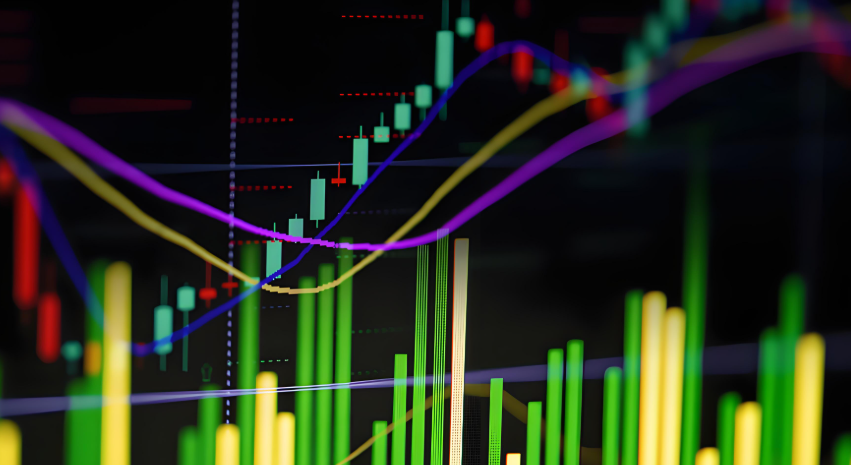The Fluctuation of U.S. Treasury Yields Isn't Crucial
Advertisements
The landscape of U.S. treasury bonds has seen remarkable fluctuations in recent months, with a notable rebound that seems to defy the usual economic anxieties associated with rising national debt. Since April, the yield on 10-year U.S. treasury bonds has declined by almost a full percentage point, rendering bond prices more attractive. Investors, however, remain apprehensive, harping on the implications of soaring debt levels—a narrative that has become a recurrent theme in financial discourse.
Globally, sovereign debt issuance is commonplace, as nations aim to bolster public finances, fund essential projects, and provide safety nets for vulnerable populations. Government bonds are considered long-term investments; therefore, stability within domestic markets, transparent economic forecasts, and a solid history of debt repayment are crucial factors that guide investor decisions. For those engaging in short-term bond investments, yield becomes a more immediate concern. In this respect, U.S. treasuries have historically served as a beacon of stability in the vast sea of market options.
The prevailing sentiment among international investors appears to be that the fluctuations of U.S. treasury yields are potentially inconsequential. The reasoning behind this lies in the enduring belief that investing in U.S. debt is a smart bet, regardless of short-term volatility. This sense of security arises from the unique circumstances surrounding U.S. fiscal policy, an independent monetary system, competitive economic prospects, and the robust creditworthiness of the dollar—an asset that remains second only to gold in its global stature.
The recent uptick in bond prices correlates with growing expectations of interest rate cuts, as investors have begun to anticipate shifts in monetary policy that may ease borrowing costs. Nonetheless, this optimism doesn't completely alleviate concerns over the long-term viability of U.S. debt—particularly as geopolitical tensions mount and the balance of foreign interest in purchasing treasury bonds becomes precarious. Many investors are now questioning whether a rising debt burden might deter foreign entities from flocking to the relative safety of U.S. bonds.
Indeed, the numbers speak volumes, as some analysts caution against the notion that the U.S. can indefinitely sustain increasing budget deficits. The specter of unsustainable debt is no longer just theoretical; projections indicate that public debt will reach 124% of GDP in 2023 and could rise to 129% by 2033. Interest expenditures alone are expected to make up approximately 15% of federal spending by 2028. Such statistics ignite fears that the U.S. may be nearing a critical juncture regarding its debt sustainability.
The implication of American foreign policy on its economic standing remains another concern for some investors. The sustainability of U.S. debt relies on maintaining a fiscal balance, which, in turn, depends heavily on the country’s ability to hold its ground within the global financial system. Moreover, it necessitates that other regions produce sufficient surpluses and possess the willingness to invest those surpluses into American financial instruments.

While certain countries may still see some of their private capital flow toward U.S. assets, there's a noticeable trend of public funds divesting from the American market, particularly among nations that are vying for alternatives. Except for a handful of developed Western economies, many find it challenging to locate viable platforms for parking their accumulated international reserves.
This situation inadvertently elevates the risks laced within America's international alliances—alliances that play a pivotal role in undergirding its influence within the global economic order. When the U.S. finds itself in need of external capital to relieve its debt burden, the potential ramifications of alienating several nations in the short-to-medium term become glaringly apparent, particularly if a return to fiscal balancing and a reduction in dependence on foreign capital is on the horizon.
Nevertheless, apprehensions held by some investors may ultimately be unwarranted. To date, America's approach to foreign policy and economic management frequently serves as a model for other nations. Since the pandemic, the country has experienced the highest real GDP growth rate among major economies, boasting a figure of $27.36 trillion in 2023—signifying a remarkable 28.3% increase since 2020. Within the same period, national debt surged from $26.95 trillion to $33.17 trillion—a 23.1% increase—marking a growth rate that underperforms GDP expansion by 5.2 percentage points. The ratio of federal leverage has also shown signs of improvement, dropping from 126.9% in 2020 to 121.2% in 2023, illustrating a decline of 4.3 points.
This interplay of multifaceted factors contributes to an equilibrium, whereby nations and regions collectively hold about 23.1% of U.S. treasury securities and nearly 40% of American public and private stock. This dynamic effectively acts as adhesive in maintaining the structure of the U.S. financial system. Should the U.S. financial architecture falter, the repercussions for these global investors would be severe. This recognition provides a compelling incentive for countries to support the U.S. financial system, even if intentions to gradually decrease their reliance on it exist.
Political unrest might incite caution among international investors regarding further contributions to the U.S. market. However, when weighing the potential for investment returns and the nation's prowess in innovation, the allure to maintain a foothold in the U.S. often supersedes hesitations. As the landscape evolves, the outcomes of forthcoming electoral contests—such as those in November—are unlikely to drastically alter either the current equilibrium or the U.S.'s status as a producer of secure assets. Regardless of existing anxieties, the investment terrain remains characterized by high returns and consistent stability, an attractive proposition for many.
Ultimately, while some investors choose to remain vigilant about public debt, it could pave the way for inherent volatility, increased yield levels, and fluctuating exchange rates in the treasury market. Yet, from a broader perspective, weakness within U.S. treasuries may present attractive buying opportunities for those looking to navigate the complexities of worldwide financial markets.
Leave a comments